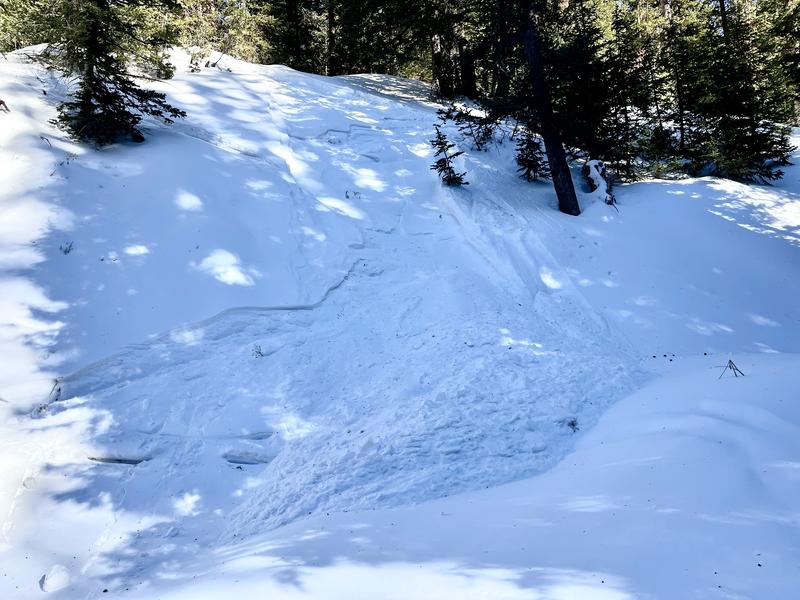As I said above, low danger doesn't mean no danger and mountain travel is inherently risky. And, unlike late season low danger, when the snowpack is generally deep and strong, the current snowpack is thin, variable, and weak. It's been over three weeks, however, since we've received any significant snow, and even longer since we had any widespread significant avalanche activity, and it's our conclusion that conditions are generally stable. Nevertheless, here are a few things to keep in mind, and although none of these concerns are widespread, there may be isolated situations that could get you into trouble.
- Persistent Weak Layer - If you've been following along, you know we've been tracking faceted persistent weak layers both at the base of the snowpack, and closer to the surface. Stability tests have been non-reactive for some time and it's our conclusion that these weak layers are currently dormant. They are still there, however, and it might be possible to run across the right combination of slab over weak layer and trigger an avalanche. Areas where you may find this combination are on steep, northerly aspects near treeline. You can give yourself a margin of safety by avoiding steep convexities, thin, shallow rocky areas, and areas of extreme terrain.
- Wind Drifted Snow - The La Sals are a high, islolated, wind swept mountain range and snow is often transported and then deposited as slabs of wind drifted snow. The current threat is isolated to specific terrain features and avalanches will be small, but they could sweep you off your feet and carry you over a cliff in the wrong location. Remain cautious of smooth, rounded, hollow feeling, areas, especially when in consequential terrain.
- Loose Dry Avalanches - Below treeline on northerly aspects, the snowpack is entirely loose and faceted. You can trigger small avalanches in very steep terrain. These slides would not be large enough to bury you, but they could sweep you off your feet and carry you into a tree or over a cliff.











